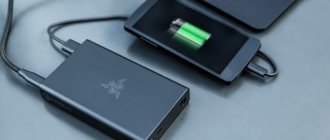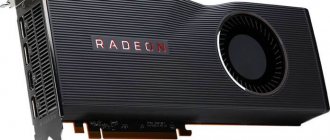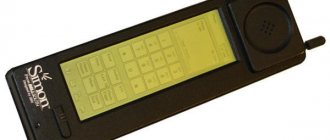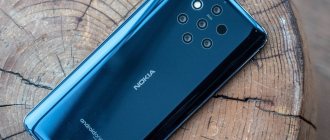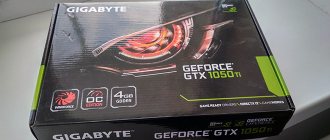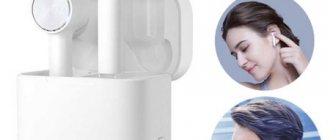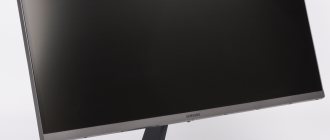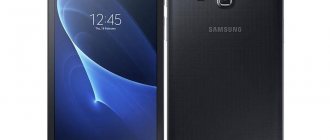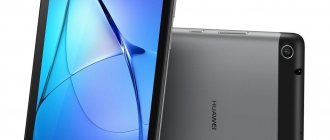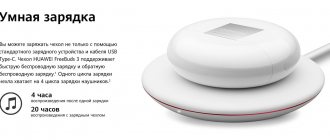How to choose a laptop from Asus?
Unlike many other companies that assemble their computer equipment in different parts of the world, ASUSTeK Computer, which produces equipment under the Asus brand, is almost 100% concentrated in Taiwan. Therefore, there is no need to worry about the build quality.
There are excellent laptop models from Asus in all price categories, both budget (10-15 thousand rubles) and premium (up to 250,000 rubles). But the most expensive is not always the best. Laptops from Asus are capable of coping with any task, even if their price is not off the charts. Living beautifully, of course, cannot be prohibited, but for the goals that most users set for themselves, those models whose price ranges from 20 to 30 thousand rubles are sufficient.
Screen size
The Asus line includes laptops with both a 10-inch screen and a 20-inch diagonal. Naturally, their prices and quality vary. But the most common models that are in constant demand are laptops with a diagonal of 15.6 inches. They are both among the budget ones and among the most expensive.
Memory
The size of the hard drive will determine the amount of information that can be stored on the laptop, as well as the number of programs available. The operating system, be it Windows or Linux, will not take up more than 35 GB of hard drive space. Therefore, even 500 GB will be enough for most purposes.
The most common hard drives come in three types: HDD, SSHD and SSD. The first ones are the most common. Their advantage is capacity, cost and service life. SSD drives are high-speed and less susceptible to mechanical damage, but they are more expensive and not always reliable. SSHD is a hybrid type of data storage. They appeared not so long ago and combined the best qualities of two other types of “hard drives”. But they still have one drawback - they have a very small capacity.
RAM
The amount of RAM directly affects the speed of the laptop. It stores all temporary data about the operation of applications that the processor operates. Nowadays, most Asus laptops use DDR3 RAM, but more and more models with DDR4 are appearing. To perform the simplest tasks, a laptop needs 4 GB of RAM, but for gaming models, 32 GB does not seem excessive.
Video card
Asus laptops use both integrated and discrete graphics cards. Among the latter there are both inexpensive (about 2,000 rubles) and elite (from 100,000 rubles). However, budget discrete video cards are rarely used in Asus laptops, since the integrated power is quite enough to perform simple tasks.
Screen resolution
This setting affects image quality. You can reduce or increase it using applications or the operating system itself. The best Asus laptops, even in the budget version, rarely have a resolution lower than 1366x768 pixels. And for elite models, the maximum resolution can reach 2048x1080.
CPU
Even inexpensive Asus processors have always boasted good performance. Until now, one of the most common lines is the seventh generation Intel Core processors, but newer models are increasingly being used in Asus laptops. They are more expensive, but much faster than their predecessors.
Purpose
Asus laptops can be used for any purpose. Absolutely all models are suitable for web surfing and solving not too complex problems in study and work. But the Asus line of laptops also includes powerful models that will appeal to the most demanding users and even gamers.
Battery
Asus laptops mainly use lithium-ion batteries. They are quite compact and roomy. Even in the most inexpensive models of Asus laptops, rechargeable batteries last for 5-6 hours of web surfing or solving simple tasks. But if you often go on business trips or play a lot, it is better to choose models with larger batteries.
Weight
In laptops, weight is of course a big factor, especially for travelers and students. The lighter and more compact the laptop, the more comfortable it is to carry. But you need to understand that the more complex the tasks that you set for the laptop, the more serious its equipment will be and the higher its weight.
The lightest models of Asus laptops barely reach one and a half kilograms, but gaming models can weigh more than five. However, for real fans of computer games, even this weight is not a hindrance!
Review of the Asus Zenfone 4 smartphone: the central model of the new generation of the line with two cameras
Content
- Specifications
- Equipment
- Appearance and ease of use
- Screen
- Camera
- Telephone and communications
- Software and multimedia
- Performance
- Thermal photographs
- Playing video
- Battery life
- Bottom line
This fall, the European presentation of the fourth generation of Asus smartphones under the general name Zenfone 4 took place in Rome. Asus CEO Jerry Shen presented the expected update to the popular family of smartphones from the Taiwanese company at the “We Love Photos” press conference. All fourth-generation Zenfone smartphones are equipped with dual front or main cameras - Asus is now paying increasing attention to the mobile photography capabilities implemented in its smartphones. Also, all new models are equipped with modern Qualcomm Snapdragon mobile processors in various configurations.
A total of five models from the updated Asus Zenfone 4 family were presented: Zenfone 4 Pro, Zenfone 4, Zenfone 4 Selfie Pro, Zenfone 4 Selfie and Zenfone 4 Max; Each of them focuses on a specific characteristic. Thus, Selfie and Selfie Pro received dual front cameras with easy-to-use image processing software, thanks to which you can take high-quality selfies in any conditions, including group ones. The Zenfone 4 Pro model is the most powerful device on the powerful Qualcomm Snapdragon 835 platform, and the fundamental characteristic of the Zenfone 4 Max is its long battery life.
Today we will look at the central model of the family, the “regular” Asus Zenfone 4. It is logical to assume that this is the model with the most balanced set of characteristics and capabilities. Let's check if this is actually true.
Main characteristics of Asus Zenfone 4 (model ZE554KL)
- SoC Qualcomm Snapdragon 630, 8 cores ARM Cortex-A53 @ 2.2 GHz or SoC Qualcomm Snapdragon 660, 8 cores Kryo 260 ( [email protected] .2 GHz + [email protected] .8 GHz)
- GPU Adreno 508 or GPU Adreno 512
- Operating system Android 7.1.1 with ZenUI 4.0
- Touch display IPS 5.5″, 1920×1080, 401 ppi
- Random access memory (RAM) 4/6 GB, internal memory 64 GB
- Nano-SIM support (2 pcs.)
- MicroSD support up to 2 TB
- GSM networks (850/900/1800/1900 MHz)
- WCDMA/HSPA+ networks (1, 2, 3, 5, 6, 8, 19)
- LTE networks FDD Cat.12 (1, 2, 3, 5, 7, 8, 18, 19, 20, 26, 28, 32), TD (38—41)
- Wi-Fi 802.11a/b/g/n/ac (2.4 and 5 GHz)
- Bluetooth 5.0
- NFC
- USB Type-C, USB OTG
- GPS, A-GPS, Glonass, BDS
- Main camera 12 MP, f/1.8, autofocus, 4K video
- Additional camera 8 MP, f/2.2, wide-angle lens 120°
- Front camera 8 MP, f/2.0
- Proximity sensor, lighting sensor, magnetic field sensor, fingerprint sensor, gyroscope sensor, step detector
- Battery 3300 mAh, Quick Charge 4.0
- Dimensions 155×75×7.5 mm
- Weight 165 g
| Average price of Asus Zenfone 4 (4/64 GB) | Average price of Asus Zenfone 4 (6/64 GB) |
| Yandex.Market widget | Yandex.Market widget |
| Retail offers Asus Zenfone 4 (4/64 GB) | Retail offers Asus Zenfone 4 (6/64 GB) |
| Yandex.Market widget | Yandex.Market widget |
Contents of delivery
The packaging of Asus Zenfone 4 is a simple and at the same time stylishly designed box with a black velvety color and golden inscriptions. The contents inside are divided into separate smaller boxes.
The kit consists of a USB connection cable and a network adapter (5 V 2 A). The key for removing cards is mounted on a cardboard insert as standard. In addition, the set includes a flexible transparent protective case and a wired stereo headset with rubber pads in three sizes.
Appearance and ease of use
Asus Zenfone 4 has a glass body of a completely simple shape, not very thin, but not too heavy, with absolutely flat front and rear panels and strongly rounded corners in plan.
The glass panels are connected along the side perimeter by a convex metal frame with a matte surface. The frame is completely non-slip; it allows you to hold the smartphone securely in your hand, even with glass on the front and back.
A smartphone with a 5.5-inch display cannot exactly be called miniature; it is a fairly large device, which, due to its strongly rounded corner parts, fits quite comfortably into clothing pockets. Fingerprints on the side frame, of course, cannot be seen, but both glass panels are not immune to their appearance.
The flat glass on the back makes the device extremely unstable on inclined smooth surfaces, the device literally slides off the table, you need to be especially careful here.
On the back panel there is a dual camera module with a flash; everything is flush with the surface, nothing protrudes beyond the body. Because of this, camera lenses get dirty faster, but this makes it quicker and easier to wipe them, including with items of clothing.
The fingerprint sensor pad is installed on the front under the screen; it does not have a mechanical button underneath, it is just a recess in the glass. The fingerprint scanner works without any complaints, recognition is fast, although sometimes there are unsuccessful authorization attempts.
The entire front panel is completely covered with 2.5D glass with sloping edges. In the upper part above the screen there are usually sensors, a front camera eye, and an LED event indicator.
Under the screen, on either side of the fingerprint sensor pad, there are two touch buttons that have their own backlight. In the settings, the backlight duration can be set to unlimited time, which is extremely rare.
The side keys do not protrude very far beyond the body; moreover, they no longer differ in texture, as was previously the case in Asus smartphones, so they are not so easy to distinguish from each other by touch.
The card slot, located on the left side, is hybrid: a Nano-SIM card is installed in one of the slots, and a memory card or a second SIM card in Nano-SIM format is installed in the other.
At the bottom end, all the elements that are usually distributed in smartphones at two ends are collected: here you can find a 3.5 mm headphone jack, a microphone hole, a main speaker output, and a USB Type-C connector.
At the top end there is only an auxiliary microphone for the noise reduction system.
The device is available in black (“Star Black”), white (“Moon White”) and green (“Mint Green”) colors. The front panel under the glass looks nice: it always matches the overall color of the case, which makes the image visually complete. The smartphone body did not receive protection from moisture and dust.
Screen
Asus Zenfone 4 features an IPS display with 2.5D Corning Gorilla Glass protection. The screen dimensions are approximately 68x121 mm with a diagonal of 5.5 inches. The resolution is 1920×1080, the pixel density is about 401 ppi.
The width of the frame around the screen on the sides is about 3 mm, the indents at the top and bottom have a height of 16 to 17 mm.
You can adjust the display brightness manually or use automatic settings based on the ambient light sensor. Multi-touch tests diagnose support for 10 simultaneous touches. There is a function for working with gloves.
A detailed examination using measuring instruments was carried out by the editor of the “Monitors” and “Projectors and TV” sections Alexey Kudryavtsev
. Here is his expert opinion on the screen of the sample under study.
The front surface of the screen is made in the form of a glass plate with a mirror-smooth surface that is scratch-resistant. Judging by the reflection of objects, the anti-glare properties of the screen are no worse than those of the Google Nexus 7 (2013) screen (hereinafter simply Nexus 7). For clarity, here is a photo in which a white surface is reflected in the switched off screens (on the left - Nexus 7, on the right - Asus Zenfone 4, then they can be distinguished by size):
The screen of the Asus Zenfone 4 is slightly darker (brightness according to photographs is 105 versus 109 for the Nexus 7). The ghosting of reflected objects in the Asus Zenfone 4 screen is very weak, this indicates that there is no air gap between the layers of the screen (more specifically, between the outer glass and the surface of the LCD matrix) (OGS - One Glass Solution type screen). Due to the smaller number of boundaries (glass/air type) with very different refractive indices, such screens look better in conditions of intense external illumination, but their repair in the case of cracked external glass is much more expensive, since the entire screen has to be replaced. The outer surface of the screen has a special oleophobic (grease-repellent) coating (even better in efficiency than that of the Nexus 7), so fingerprints are removed much more easily and appear at a lower speed than with regular glass.
With manual brightness control and when the white field was displayed in full screen, the maximum brightness value was about 630 cd/m², the minimum was 5.0 cd/m². The maximum brightness is very high, and, given the excellent anti-glare properties, readability even on a sunny day outdoors should be at a decent level. In complete darkness, the brightness can be reduced to a comfortable value. There is automatic brightness adjustment based on the light sensor (it is located to the left of the front speaker slot). In automatic mode, as external lighting conditions change, the screen brightness both increases and decreases. The operation of this function depends on the position of the brightness adjustment slider. If it is 100%, then in complete darkness the auto-brightness function reduces the brightness to 16 cd/m² (normal), in an artificially lit office (about 550 lux) it sets it to 265 cd/m² (suitable), in a very bright environment (corresponding to illumination on a clear day outdoors, but without direct sunlight - 20,000 lux or a little more), the brightness increases to 630 cd/m² (to the maximum - this is what is needed). If the adjustment is approximately 50%, then the values are as follows: 16, 170 and 630 cd/m² (also suitable values). If the regulator is at 0% - 5.0, 65 and 590 cd/m² (the first two values are underestimated, which is logical). It turns out that the auto-brightness function works adequately and allows the owner to customize his work to individual requirements. Only at very low brightness levels does significant backlight modulation appear, but its frequency is high, about 2.3 kHz, so there is no visible screen flicker and cannot be detected in the stroboscopic effect test.
This smartphone uses an IPS matrix. The microphotographs show a typical IPS subpixel structure:
For comparison, you can see the gallery of microphotographs of screens used in mobile technology.
The screen has good viewing angles without significant color shift even with large viewing deviations from perpendicular to the screen and without inverting shades. For comparison, here are photographs in which identical images are displayed on the screens of Asus Zenfone 4 and Nexus 7, while the screen brightness is initially set to approximately 200 cd/m², and the color balance on the camera is forcibly switched to 6500 K.
There is a white field perpendicular to the screens:
Note the good uniformity of brightness and color tone of the white field.
And a test picture:
The colors on the screen of the Asus Zenfone 4 have a natural saturation, the color balance of the Nexus 7 and the tested screen is noticeably different. The photo above was taken with the default Balance in the screen settings, there are four of them in total:
Bluelight Filter Profile
Vivid profile has slightly higher color contrast, and the Customized
allows you to adjust hue and saturation.
And in all profiles, except Blue Filter
, you can adjust the tint warmer or cooler.
Now at an angle of approximately 45 degrees to the plane and to the side of the screen:
It can be seen that the colors have not changed much on both screens, but on the Asus Zenfone 4 the contrast has decreased to a greater extent due to the greater brightening of blacks.
And a white field:
The brightness of the screens at an angle has decreased (at least 5 times, based on the difference in shutter speed), but the Asus Zenfone 4 screen at this angle is still slightly darker. When deviated diagonally, the black field is highlighted to a medium degree and acquires a reddish tint. The photographs below demonstrate this (the brightness of the white areas in the direction perpendicular to the plane of the screens is the same!):
And from another angle:
When viewed perpendicularly, the uniformity of the black field is good, although not ideal:
The contrast (approximately in the center of the screen) is high - about 1300:1. The response time for the black-white-black transition is 30 ms (17 ms on + 13 ms off). The transition between halftones of gray 25% and 75% (based on the numerical value of the color) and back takes a total of 41 ms. The gamma curve, constructed using 32 points with equal intervals based on the numerical value of the shade of gray, did not reveal any blockage in either the highlights or the shadows. The exponent of the approximating power function is 2.31, which is higher than the standard value of 2.2, which is why the image is slightly darkened. In this case, the real gamma curve deviates slightly from the power-law dependence:
We did not detect the presence of dynamic adjustment of the backlight brightness in accordance with the nature of the displayed image, which is very good.
Color gamut is close to sRGB:
The spectra show that the matrix filters moderately mix the components with each other:
As a result, the colors have a natural saturation and hue. By default, the balance of shades on the gray scale is good, since the color temperature, although noticeably higher than the standard 6500 K, but the deviation from the blackbody spectrum (ΔE) is below 10, which is considered an acceptable indicator for a consumer device. Moreover, both parameters do not change very much from shade to shade - this has a positive effect on the visual assessment of color balance. (The darkest areas of the gray scale can be ignored, since color balance there is not very important, and the error in measuring color characteristics at low brightness is large.)
In the graphs above, the curves are Without corr.
correspond to the results without any color balance correction, and the
Warm
correspond to the data obtained after shifting the color temperature correction slider to the extreme “warm” position. It can be seen that the change in balance corresponds to the expected result, since the color temperature approached the standard value, but ΔE increased slightly. Note that this function is implemented more for show, since there is no numerical display of the correction value.
To summarize: the screen has a very high maximum brightness and has excellent anti-glare properties, so the device can be used outdoors even on a sunny summer day without any problems. In complete darkness, the brightness can be reduced to a comfortable level. It is also possible to use a mode with automatic brightness adjustment, which works adequately. Also, the advantages of the screen include the presence of an effective oleophobic coating, the absence of an air gap in the layers of the screen and flicker, high contrast, a color gamut close to sRGB and an acceptable color balance. The screen quality can be considered high.
Camera
The front module received an 8-megapixel sensor and a lens with an f/2.0 aperture without its own flash or autofocus. The shooting quality is impressive: if you turn off the portrait beautification function (smoothing the skin texture), you get the clearest, brightest picture with high detail and good sharpness. The only let down is the unnatural color rendering.
A set of two modules is used as the main camera. The main module received a Sony IMX362 sensor with a resolution of 12 megapixels (matrix size - 1/2.55″, pixel size - 1.4 microns) and a 6-element lens with f/1.8 aperture, viewing angle 83°, 4-axis optical image stabilization and a dual-pixel phase detection autofocus system. The additional module has an 8 MP sensor and a wide-angle lens (120°) with a fixed focal length and f/2.2 aperture. Switching between cameras is done almost instantly using a button on the screen.
The cameras are powered by the Qualcomm Spectra 160 image processor, designed to provide fast and smooth focusing and zooming, as well as improved color accuracy. The camera system also uses a color correction sensor and proprietary PixelMaster technology. The menu has manual settings for photo and video shooting (shutter speed (from 1/10000 to 32 s), photosensitivity (up to ISO 3200), white balance, focus type selection and exposure compensation). The ability to save pictures in RAW format is available.
The camera can shoot video in a maximum resolution of 4K, as well as in Full HD (1920×1080) at 60 and 30 fps. Moreover, the stabilization function works in all modes, which is commendable. True, sometimes it leads to the appearance of “jelly-like” distortions in the video during wiring.
The camera copes well with video shooting. The image is clear, smooth, sharp and detailed. Claims can be made, again, to the caustic, overly saturated colors of color rendering. The sound is also recorded clearly and cleanly, the noise reduction system with two microphones generally works well, although it does not always cope with strong wind noise.
- Video #1 (109 MB, 3840× [email protected] fps, H.264, AAC)
- Video No. 2 (40 MB, 3840× [email protected] fps, H.264, AAC)
- Video No. 3 (70 MB, 3840× [email protected] fps, H.264, AAC)
- Video No. 4 (48 MB, 1920× [email protected] fps, H.264, AAC)
Below are examples of photographs with our comments on quality. Our specialist Anton Soloviev
.
| Good sharpness even in medium plans. | |
| The text is well done. | |
| In the so-called Super Resolution mode, the camera takes pictures with a resolution of 48 megapixels - essentially, this is merging 4 panoramic images into one. The result doesn't look too bad. | |
| There is a small area of out of focus on the left side of the frame, but otherwise the field sharpness is quite good. | |
| The camera copes well with macro photography. | |
| Good detail across the frame except for the left edge. | |
| The camera does well in macro photography in room lighting. |
The camera turned out good. Noises are sometimes noticeable, but not noticeable. Sharping is also present, but not annoying. In general, software processing is very moderate. The blurred area along the left edge is a little disappointing, and it’s not even entirely clear whether this is a defect in our test unit or some kind of software flaw. In good lighting, the camera is capable of producing fairly high detail both in the field of the frame and in the plans.
| EGF 24 mm (main camera) | EGF 11 mm (additional chamber) |
Contrary to new trends, the additional camera module installed in Zenfone 4 is equipped not with a telephoto lens, but with an ultra-wide-angle lens, although it seemed that this feature was already a thing of the past. It is a little doubtful to use a smaller sensor for a larger viewing angle of the lens, since small details in this case will begin to disappear, creating a feeling of a soapy image. However, during real shooting this effect is almost unnoticeable due to the weak sensor, the noise of which covers up the mentioned problems. As a result, the wide-angle module cannot be called good - it is average at best, and it is not entirely clear in which scenarios it makes sense to use it.
As for the main camera, we can say that it was a success and will cope well with many scenarios.
Telephone and communications
Communication capabilities of Asus Zenfone 4 include support for data transmission in LTE FDD and TD networks. Including, all the most common frequency bands in our country are supported (Band 3, 7 and 20 FDD LTE). Thanks to the new SoC, which uses the Qualcomm Snapdragon X12 LTE modem, LTE Cat.12/13 is supported (600/150 Mbps download/upload, respectively).
In the urban areas of the Moscow region, the device behaves confidently, does not lose connection in places where reception is uncertain, and quickly restores the connection. The speed on the LTE network is stable, there are no problems with the 4G connection. Other communication options are also rich: they include support for Bluetooth 5.0 and both Wi-Fi bands (2.4 and 5 GHz). There is also an NFC module, but, unfortunately, it does not work fully with Troika travel cards and the “My Travel Card” application.
The navigation module works with GPS (with A-GPS), with the domestic Glonass and the Chinese Beidou. During a cold start, the first satellites are detected within tens of seconds; positioning accuracy in the Moscow region is not ideal. There is a built-in magnetic field sensor for compass operation.
The phone application supports Smart Dial, that is, while dialing a phone number, a search is immediately carried out by the first letters in contacts. Methods for sorting and displaying contacts are standard for the Android interface; contacts can be sorted by last name or first name, the same with displaying the caller's contact. You can take advantage of advanced settings using a spam filter, smart search for contacts, password protection, a bunch of duplicate entries and much more using the ZenUI Dialer program, which can be downloaded and updated via Google Play.
In conversational dynamics, the voice of a familiar interlocutor is clearly recognizable, there is no extraneous noise, the sound is natural, pleasant to the ear, bright, rich and clear, the volume margin is sufficient. The vibration alert is also very powerful, you can’t miss this one.
The platform supports active standby of both SIM cards in 3G/4G simultaneously. That is, the SIM card can be in active standby in the 3G/4G network, and not just in 2G, even if another card is assigned to transmit data in 4G (for example, Beeline SIM cards as the main one and Moscow Tele2 are active in standby mode at the same time ). The interface allows you to pre-select a specific card for sending SMS, voice calls, and data transfer. The cards operate in Dual SIM Dual Standby mode, there is only one radio modem.
Software and multimedia
The software platform uses Android OS version 7.1.1 with the ability to update over the air (OTA). The fourth generation Asus Zenfone devices have a new version of their own proprietary shell, ZenUI 4.0. Its interface, as usual, is as detailed as possible; almost everything can be configured, from assigning virtual buttons and indicators to multi-window mode and gestures. In terms of design, compared to the interfaces of other manufacturers that strive for laconicism, Asus ZenUI continues to look clumsy; it lacks gloss and restrained style.
There are quite a lot of additional programs: there are social network clients, and own utilities for monitoring the system, and even a separate beautifier for selfie shots. New features include automatic face recognition with tagging in the Gallery application, the Safeguard emergency communication system in case of incidents, and a convenient Page Marker “bookmark” for web pages.
To listen to music, the standard Google Music player is used, and a special AudioWizard application is used to configure audio system parameters. The earpiece of this smartphone works in tandem with the main one to play music, games, etc., creating a stereo effect. The speakers sound loud and clear, there are no complaints about the sound. Dual noise-canceling microphones cancel out ambient noise for better voice quality during video recording and real-time voice streaming. In addition, when headphones are connected, DTS Headphone:X surround sound technology is used and audiophile format 24-bit/192 kHz is supported. In the headphones the sound is also bright, clear and rich, the volume reserve is large.
The voice recorder demonstrates excellent sensitivity, the smartphone is quite suitable for recording interviews and lectures.
Performance
In its usual manner, Asus continues to release products with identical names, but different technical equipment. Why this is being done is completely unclear; it would be entirely possible to separate the modifications by name and not confuse users. Now we have a new smartphone called Asus Zenfone 4, which can run on a Qualcomm Snapdragon 630 or Qualcomm Snapdragon 660 single-chip system, and the difference between these platforms is quite large. The older SoC Snapdragon 660 has 8 Kryo 260 CPU cores ( [email protected] .2 GHz + [email protected] .8 GHz), while the Snapdragon 630 SoC installed in our test sample has ARM Cortex-A53 CPU cores. There are also 8 of them, and their maximum frequency is also 2.2 GHz, but the Kryo 260 cores are noticeably more powerful. Video accelerators are also different: Adreno 512 or (in our case) Adreno 508.
The amount of RAM is 4 or 6 GB (these are two more possible options for each of the two modifications; the amount of memory does not depend on the installed SoC), and the built-in flash memory is always 64 GB. Of these, on average, about 51 GB of flash memory and 2 (out of 4) GB of RAM are free.
It is possible to expand the memory by installing microSD cards, but the system does not offer installation of applications on the memory card. You can also connect external flash drives in USB OTG mode.
Qualcomm Snapdragon 630 is a completely new platform designed for mid-range smartphones. It is more powerful than Snapdragon 625/626, but still its results do not go beyond the average level: these are still the same 65K-68K points in AnTuTu, no more.
Thanks to the 14 nm process technology, this SoC combines good performance with low power consumption. Snapdragon 630 provides the system with reliable performance and in real scenarios allows the smartphone to cope with any modern tasks. There are no problems with games either, Modern Combat 5 and Mortal Kombat X run without the slightest slowdown.
Testing in comprehensive tests AnTuTu and GeekBench:
For convenience, we have compiled all the results we obtained when testing the smartphone in the latest versions of popular benchmarks into tables. The table usually adds several other devices from different segments, also tested on similar latest versions of benchmarks (this is done only for a visual assessment of the obtained dry figures). Unfortunately, within the framework of one comparison it is impossible to present the results from different versions of benchmarks, so many worthy and relevant models remain “behind the scenes” - due to the fact that they once passed the “obstacle course” on previous versions of test programs.
| Asus Zenfone 4 (Qualcomm Snapdragon 630) | Sony Xperia XA1 (MediaTek MT6757) | HTC One X10 (MediaTek MT6755) | Huawei Nova 2 (HiSilicon Kirin 659) | Nokia 5 (Qualcomm Snapdragon 430) | |
| AnTuTu (v6.x) (bigger is better) | 68182 | 61638 | 50597 | 60485 | 45287 |
| GeekBench (v4.x) (bigger is better) | 859/4133 | 814/3518 | 757/2071 | 904/3513 | 672/2867 |
Testing the graphics subsystem in gaming tests 3DMark, GFXBenchmark and Bonsai Benchmark:
When testing in 3DMark, the most powerful smartphones now have the ability to run the application in Unlimited mode, where the rendering resolution is fixed at 720p and VSync is disabled (which can cause the speed to rise above 60 fps).
| Asus Zenfone 4 (Qualcomm Snapdragon 630) | Sony Xperia XA1 (MediaTek MT6757) | HTC One X10 (MediaTek MT6755) | Huawei Nova 2 (HiSilicon Kirin 659) | Nokia 5 (Qualcomm Snapdragon 430) | |
| 3DMark Ice Storm Sling Shot ES 3.1 (bigger is better) | 821 | 463 | 671 | 421 | 413 |
| GFXBenchmark Manhattan ES 3.1 (Onscreen, fps) | 10 | 6 | 15 | 5 | 5 |
| GFXBenchmark Manhattan ES 3.1 (1080p Offscreen, fps) | 10 | 6 | 6 | 5 | 5 |
| GFXBenchmark T-Rex (Onscreen, fps) | 29 | 21 | 32 | 17 | 20 |
| GFXBenchmark T-Rex (1080p Offscreen, fps) | 29 | 22 | 21 | 17 | 18 |
Browser cross-platform tests:
As for benchmarks for assessing the speed of the javascript engine, you should always make allowance for the fact that their results significantly depend on the browser in which they are launched, so the comparison can only be truly correct on the same OS and browsers, and this is possible during testing not always. For Android OS, we always try to use Google Chrome.
| Asus Zenfone 4 (Qualcomm Snapdragon 630) | Sony Xperia XA1 (MediaTek MT6757) | HTC One X10 (MediaTek MT6755) | Huawei Nova 2 (HiSilicon Kirin 659) | Nokia 5 (Qualcomm Snapdragon 430) | |
| Mozilla Kraken (ms, less is better) | 9347 | 7910 | 9284 | 9992 | 8887 |
| Google Octane 2 (bigger is better) | 3723 | 4885 | 4489 | 3928 | 4828 |
| SunSpider (ms, less is better) | 1242 | 880 | 946 | 1104 | 1310 |
AndroBench memory speed test results:
Thermal photographs
Below is a thermal image of the rear
surface obtained after 10 minutes of battery testing in the GFXBenchmark program:
Heating is more localized in the upper right part of the device, which apparently corresponds to the location of the SoC chip. According to the heat chamber, the maximum heating was only 33 degrees (at an ambient temperature of 24 degrees), which is relatively little.
Playing video
To test the omnivorous nature of video playback (including support for various codecs, containers and special features, such as subtitles), we used the most common formats, which make up the bulk of the content available on the Internet. Note that for mobile devices it is important to have support for hardware video decoding at the chip level, since it is most often impossible to process modern options using processor cores alone. Also, you shouldn’t expect a mobile device to decode everything, since the leadership in flexibility belongs to the PC, and no one is going to challenge it. All results are summarized in a table.
| Format | Container, video, sound | MX Video Player | Standard video player |
| 1080p H.264 | MKV, H.264 1920×1080, 24 fps, AAC | plays normally | plays normally |
| 1080p H.264 | MKV, H.264 1920×1080, 24 fps, AC3 | plays normally | video plays but no sound |
| 1080p H.265 | MKV, H.265 1920×1080, 24 fps, AAC | plays normally | cannot be played |
| 1080p H.265 | MKV, H.265 1920×1080, 24 fps, AC3 | plays normally | cannot be played |
Further testing of video playback was performed by Alexey Kudryavtsev
.
When using the available adapter from USB Type-C to HDMI, we did not find any image output to an external device, so we had to limit ourselves to testing the output of video files on the screen of the device itself. To do this, we used a set of test files with an arrow and a rectangle moving one division per frame (see “Method for testing video playback and display devices. Version 1 (for mobile devices)”). Screenshots with a shutter speed of 1 s helped determine the nature of the output of frames of video files with various parameters: the resolution varied (1280 by 720 (720p), 1920 by 1080 (1080p) and 3840 by 2160 (4K) pixels) and frame rate (24, 25, 30, 50 and 60 fps). In the tests we used the MX Player video player in the “Hardware” mode. The test results are summarized in the table:
| File | Uniformity | Passes |
| 4K/60p (H.265) | cannot be played | |
| 4K/50p (H.265) | cannot be played | |
| 4K/30p (H.265) | Fine | No |
| 4K/25p (H.265) | Great | No |
| 4K/24p (H.265) | Fine | No |
| 4K/30p | Fine | No |
| 4K/25p | Great | No |
| 4K/24p | Great | No |
| 1080/60p | Great | No |
| 1080/50p | Fine | No |
| 1080/30p | Great | No |
| 1080/25p | Great | No |
| 1080/24p | Great | No |
| 720/60p | Great | No |
| 720/50p | Fine | No |
| 720/30p | Fine | No |
| 720/25p | Fine | No |
| 720/24p | Fine | No |
Note: If both columns have Uniformity
and
Skips
are given green ratings, this means that, most likely, when watching films, artifacts caused by uneven alternation and skipping of frames will either not be visible at all, or their number and visibility will not affect the viewing comfort. Red marks indicate possible problems with playback of the corresponding files.
According to the frame output criterion, the quality of playback of video files on the screen of the smartphone itself is good, since in most cases frames (or groups of frames) can (but are not required) be output with more or less uniform alternation of intervals and without skipping frames. When playing video files with a resolution of 1920 by 1080 pixels (1080p) on a smartphone screen, the image of the video file itself is displayed exactly along the border of the screen, one to one in pixels, that is, in the original resolution. The brightness range displayed on the screen corresponds to the standard range of 16-235: all gradations of shades are displayed in shadows and highlights. Note: this smartphone has support for hardware decoding of H.265 files with a color depth of 10 bits per color, but display output is apparently still carried out in 8-bit mode.
Battery life
The non-removable battery installed in the Asus Zenfone 4 has a capacity of 3300 mAh. With such a battery, the hero of the review demonstrates quite decent battery test results (certainly better than expected), that is, the energy efficiency of new generation hardware platforms has really improved noticeably.
In real life, the device behaves the same way as most modern smartphones: it confidently survives until the evening charge, but you can’t count on more.
Testing has traditionally been done at normal power consumption levels without using power-saving features.
| Battery capacity | Reading mode | Video mode | 3D Game Mode | |
| Asus Zenfone 4 | 3300 mAh | 16:00 | 11:30 am | 7:00 am |
| Xiaomi Mi A1 | 3080 mAh | 12:00 pm | 10:00 am | 6:00 am |
| Sony Xperia XA1 | 2300 mAh | 13:00 | 8:30 a.m. | 4 hours 10 minutes |
| HTC One X10 | 4000 mAh | 17:00 | 12:00 pm | 5:00 a.m. |
| Huawei Nova 2 | 2950 mAh | 13:00 | 10:30 a.m. | 4:00 am |
Continuous reading in the Moon+ Reader program (with a standard, light theme) at a minimum comfortable brightness level (brightness was set to 100 cd/m²) with auto-scrolling lasted 16 hours until the battery was completely discharged, and when continuously watching videos in high quality (720p) with At the same brightness level via a home Wi-Fi network, the device operates for about 11.5 hours. In 3D gaming mode, the smartphone can work up to 7 hours, depending on the specific game.
The smartphone supports Quick Charge 4 fast charging; from its own network adapter (2 A 5 V), the smartphone is charged within 2 hours with a current of 1.83 A at a voltage of 5 V. The smartphone does not support wireless charging.
Bottom line
Asus Zenfone 4 turned out to be quite average in all respects: design, screen, sound, communication capabilities, autonomy - everything is at a good level, although there is nothing outstanding. The key feature of the smartphone is its dual camera, but the second module does not have high shooting quality and can only offer a wide-angle lens. As for the price, the smartphone, frankly speaking, is not affordable: it officially costs 33 thousand rubles, so this is the most expensive member of the Zenfone 4 family, not counting Zenfone 4 Pro. Perhaps the manufacturer overestimated its product, because the hardware platform here, although new, is far from high-performance, and certainly not top-end. However, if the smartphone were cheaper, it would be very interesting as a balanced mid-range device that successfully combines all the features and characteristics - from a nice body to powerful sound and decent battery life.
Comparison table of the best Asus laptops
| Name | Main characteristics | Price |
| ASUS X540MA | Matte screen with TFT TN matrix, built-in Intel UHD Graphics 600 video card, resolution 1366×768, 4 GB RAM. | ₽ 19 690 |
| ASUS VivoBook X540YA | It has similar characteristics, but is slightly inferior in RAM frequency; you can choose a modification with 4 rather than 2 GB of RAM. | ₽ 15 240 |
| ASUS TUF Gaming FX705GE | Weight 2.6 kg, Intel Core i5 8300H 2300 MHz processor, NVIDIA GeForce GTX 1050 Ti, 8 GB of RAM, easy to increase to 32. | ₽ 88 790 |
| ASUS ROG CHIMERA G703GX | 17.3-inch screen, Intel Core i7 8750H processor with a frequency of 2200 MHz, 32 gigabytes of DDR4 RAM, 8 GB NVIDIA GeForce RTX 2080 video card. | ₽ 262 990 |
| ASUS A553SA | On a Braswell core with a frequency of 1600 MHz, weight 2 kg, size 380x260x29 mm, 8 GB of RAM, 15-inch glossy monitor. | ₽ 15 990 |
| ASUS X555YA | The battery holds a charge for about 4 hours, the RAM in the basic configuration is not enough, the display resolution is only 1366x768. | ₽ 20 690 |
| ASUS ZenBook Flip 14 | 8 GB RAM, 4-core processor with a frequency of 1600 MHz, 14-inch touch screen, integrated Intel UHD Graphics 620 graphics card. | ₽ 66 400 |
| ASUS VivoBook Flip TP401 | With a display diagonal of 13.3 inches, it weighs only one and a half kilograms, and the charge of the built-in three-cell battery is enough for 10 hours of battery life. | ₽ 40 120 |
| ASUS ZenBook 13 UX333FA | The NVIDIA GeForce GTX 1050 graphics card with 2048 MB of memory, the 15.6-inch matte display gives excellent viewing angles, and the keyboard layout is comfortable and smooth. | ₽ 64 990 |
| ASUS X570UD | A matte display with a diagonal of 15.6 inches provides a resolution of 1920 by 1080 pixels, a discrete video card NVIDIA GeForce GTX 1050 with 2 GB. | ₽ 47 099 |
| ASUS VivoBook S13 S330FN | Weight 1.2 kg, dimensions - 305.7x196.3x17.9 mm, NVIDIA GeForce MX150, SSD disk capacity 128 GB, processor 2100 MHz. | ₽ 47 490 |
| ASUS ZENBOOK UX305FA | A compact model that, with a display diagonal of 13.3 inches, weighs only 1180 grams, the screen is matte and is based on IPS technology. | ₽ 55 930 |
| ASUS E203MA | 4 GB RAM, 64 GB eMMC hard drive, Intel UHD Graphics 605 video card. | ₽ 24 690 |
| ASUS ZenBook Flip UX360CA | The TFT IPS screen is glossy, but has almost no glare, 8 GB of RAM, and the battery will last for almost 10 hours of active use. | ₽ 55 230 |
| ASUS ZenBook U310UA | An excellent matte IPS display with FullHD resolution, fast RAM, a fairly powerful processor and all the necessary interfaces for communication with the outside world. | ₽ 34 990 |
| ASUS ZenBook 3 Deluxe UX3490UA | Fingerprint scanner, 4-core Intel Core i5-8250U processor, 8 GB of built-in RAM, 521 GB SSD drive, 9 hours of active battery life. | ₽ 89 000 |
| Asus Zenbook UX433FA A5093T | The screen is 14 inches, weighs 1050 grams, has an SSD instead of a traditional magnetic hard drive, an energy-efficient Intel processor, and a minimum of unnecessary functionality. | ₽ 47 380 |
| ASUS ZenBook Flip UX561UN | 8 GB of basic RAM can easily turn into 16, and a good discrete video card NVIDIA GeForce MX150 with its own memory of 2048 MB can be replaced if desired. | ₽ 85 470 |
| ASUS VivoBook Pro N752VX | I was surprised by the presence of a DVD-RW drive, two hard drives (HDD+SSD), 8 GB of DDR4 RAM can be easily increased to 32, USB 3.0×3, USB 3.1 Type-C, HDMI, Mini DisplayPort, micro/output input. to headphones Combo, LAN (RJ-45). | ₽ 59 990 |
| ASUS VivoBook Pro 17 N705UD | There is a discrete video card NVIDIA GeForce GTX 1050 with 2 gigabytes, a good model that is suitable for both gaming and graphics work. | ₽ 69 300 |
No. 10 – ASUS X540MA
Price: 23,000 rubles
A good solution for users with limited financial resources. The 15.6-inch screen has FHD resolution, and therefore produces a fairly detailed and clear image. There are three USB ports, which allows the model to look more interesting than its peers when compared - usually laptops at this price have two inputs. In addition, there is Bluetooth 4.2, so you can easily use wireless headphones or a mouse.
The cheapest solution in the collection weighs little - only 1.9 kg, so you won’t notice it’s in your backpack on the way to work or school. You shouldn’t expect high performance from a laptop, but the combination of an Intel Celeron N4000 processor and 4 GB of RAM copes with office programs with a bang. The downside is the impossibility of upgrading due to the lack of additional slots for RAM and storage.
ASUS X540MA
No. 6 – ASUS VivoBook 15 X512
Price: 43,000 rubles
ASUS VivoBook 15 X512 is one of the most compact laptops with a screen diagonal of 15.6 inches. Due to its thin frames, its dimensions are 357x230x19 mm and it weighs 1.75 kg. As a result, the device does not take up much space in your backpack and you can easily take it with you to work or school. The hardware is quite good: Intel Core i3 7020U and 6 GB of RAM guarantee smooth operation in any scenario.
The device is not suitable for loud AAA games, but you can while away your lunch break by playing CS:GO on the 512. We also note the fact that the laptop is easy to disassemble and has an additional slot for an SSD drive. One of the disadvantages is the lack of backlighting on the keyboard.
ASUS VivoBook 15 X512
No. 2 – ASUS ZenBook 14 UX433
Price: 80,000 rubles
A new model that will appeal to users for its subtlety. The thickness of its case is only 17 mm, and its weight is 1.26 kg. Add to this the use of durable metal as the main material, which does not collect fingerprints, and we get an excellent solution for those who prefer to work outside the home. For this purpose, the laptop also has a Wi-Fi module with support for both bands and Bluetooth for connecting wireless headphones or a mouse.
The 14-inch screen with IPS matrix has wide viewing angles and color rendition close to the reference one. The fast operation of the system is ensured by a 512 GB SSD. The Harmon/Kardon inscription on the case is not in vain - the sound of the laptop is loud, detailed and voluminous. The main object of criticism from users is the laggy touchpad.
ASUS ZenBook 14 UX433
